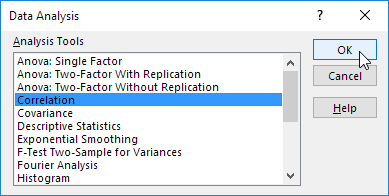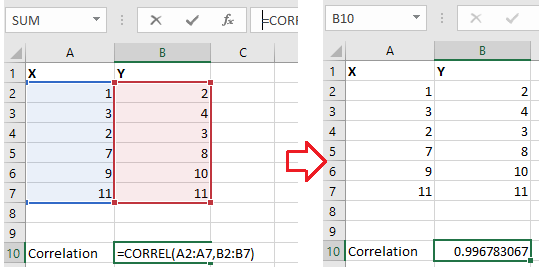

You don’t need to worry about the “Number2” field. In the Function Arguments window, select all of the cells in the “Values” column as the input for the “Number1” field.

To access the function through the “Formulas” menu, select the “More Functions” drop-down, select the “Statistical” option, and then click on “AVERAGE.” Type in the following formula and press enter -or- use the “Formulas” menu. Select the cell where you will store the result of the “AVERAGE” function. The “Values” column contains ten random numbers centered around 500, and the “Z-Score” column is where we will calculate the Z-Score using the results stored in the ‘helper’ cells.įirst, we will calculate the mean of the values using the “AVERAGE” function. Let’s Look at an Exampleįor our example, we have two columns (“Values” and “Z-Score”)and three “helper” cells for storing the results of the “AVERAGE,” “STDEV.S,” and “STDEV.P” functions. It is a more conservative approach to assume there is more variability in the data. The difference will usually be small, but the result of the “STDEV.P” function will always be smaller than the result of the “STDEV.S” function for the same data set. Which you choose is based on your data set. An entire population would be something like all mosquitoes on Earth or every car in a production run of a specific model. STDEV.P: This function calculates the standard deviation while treating the data as the entire population.A sample of a population might be something like the particular mosquitoes collected for a research project or cars that were set aside and used for crash safety testing. It calculates the standard deviation while treating the data as a ‘sample’ of a population. STDEV.S: This function is identical to the previous “STDEV” function.Excel 2010 broke that into two functions that calculate the standard deviation: Previous versions of Excel only had the “STDEV” function, which calculates the standard deviation while treating the data as a ‘sample’ of a population.

The other statistical value we need is the ‘standard deviation’ and Excel has two different functions to calculate the standard deviation in slightly different ways. It simply adds up all of the values in a cell range and divides that sum by the number of cells containing numerical values (it ignores blank cells). The first statistical value you need is the ‘mean’ and Excel’s “AVERAGE” function calculates that value. Comparing the Z-Scores of the two students could reveal that the student with the 87% score did better in comparison to the rest of their class than the student with the 98% score did in comparison to the rest of their class.

You know the first student got a 95% on the final exam in one class, and the student in the other class scored 87%.Īt first glance, the 95% grade is more impressive, but what if the teacher of the second class gave a more difficult exam? You could calculate the Z-Score of each student’s score based on the average scores in each class and the standard deviation of the scores in each class. Here’s an example to help clarify. Say you wanted to compare the test results of two Algebra students taught by different teachers. The general formula looks like this: =(DataPoint-AVERAGE(DataSet))/STDEV(DataSet) It is defined as the number of standard deviations away from the mean a data point lies. What is a Z-Score and what do the AVERAGE, STDEV.S, and STDEV.P functions do?Ī Z-Score is a simple way of comparing values from two different data sets.


 0 kommentar(er)
0 kommentar(er)
